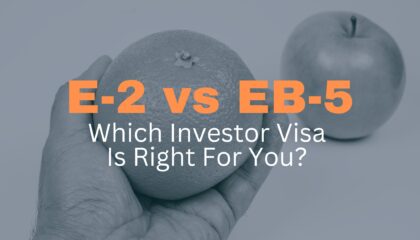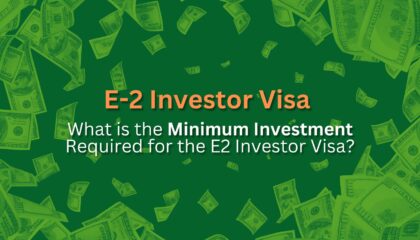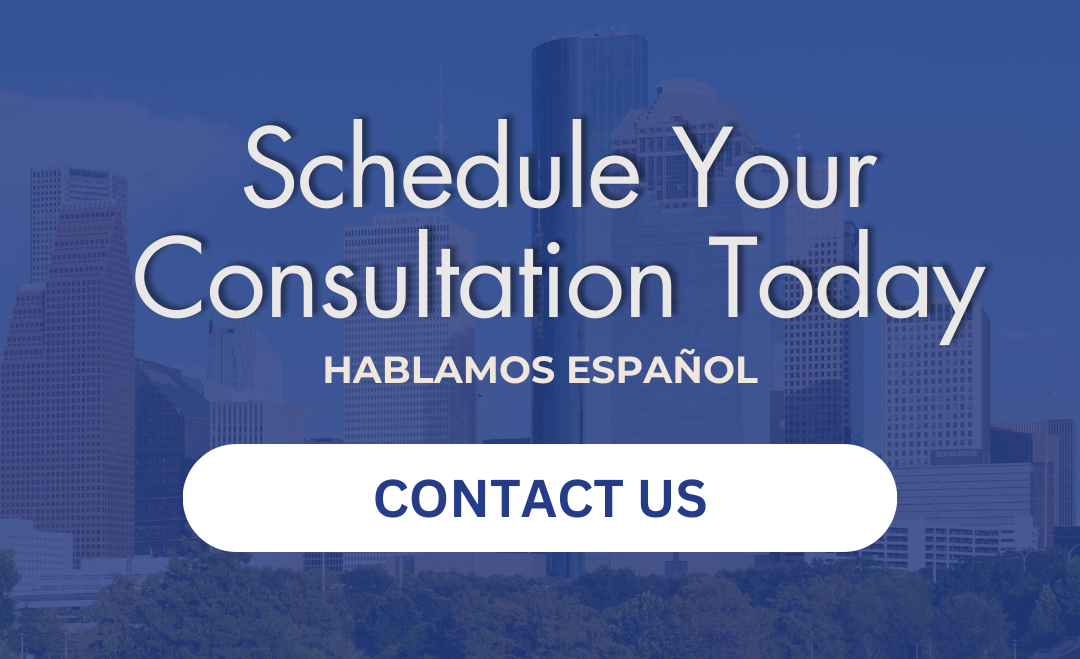Overview of the EB-5 Immigrant Investor Visa

Table of Contents
- Overview of the EB-5 Immigrant Investor Visa
- Introduction
- What is the EB-5 Immigrant Investor Visa?
- What types of investments are available under the EB-5 Immigrant Investor Visa program?
- What are the eligibility criteria and investment requirements for the EB-5 Immigrant Investor Visa program?
- What is the application process for the EB-5 Immigrant Investor Visa program?
- Conclusion
Introduction
This comprehensive overview to the EB-5 Immigrant Investor Visa program aims to provide foreign investors with a thorough understanding of the EB-5 visa process, including eligibility requirements, investment criteria, and application procedures. Whether you’re a seasoned investor or exploring your options for immigration to the United States, our goal is to guide you with the knowledge and resources needed to navigate the EB-5 program successfully.

What is the EB-5 Immigrant Investor Visa?
The EB-5 Immigrant Investor Visa program is a pathway to achieve lawful permanent residency (green card) in the United States for foreign investors and their immediate family members. Established by the U.S. Congress in 1990, the EB-5 program aims to stimulate economic growth and job creation by encouraging foreign investment in new commercial enterprises. By investing in projects that meet specific criteria, foreign investors can obtain conditional residency and, ultimately, lawful permanent residency status in the United States.

What types of investments are available under the EB-5 Immigrant Investor Visa program?
The EB-5 program offers investors flexibility in the types of projects they can invest in. Basically, there are 2 routes an EB-5 investor can take, Direct Investment or investing through a Regional Center.
Direct Investment
Investors can choose to invest directly in a new commercial enterprise that they manage and control. Direct investments provide investors with greater oversight and control over their investment, allowing them to actively participate in the management and operations of the enterprise. Some forms of direct investments involve ventures like starting or purchasing an existing business.
Regional Center Investment
Alternatively, investors may choose to invest in a project with a USCIS-designated regional center. Regional centers are private or public entities that promote economic development projects and job creation within specific geographic areas. Investing in a regional center basically involves investing capital in a pool of funds with other investors for large-scale projects, where job creation requirements are calculated differently, but unlike direct investment, the foreign investor has a lot less direct control over the investment.

What are the eligibility criteria and investment requirements for the EB-5 Immigrant Investor Visa program?
To qualify for the EB-5 Immigrant Investor Visa, foreign investors must meet the following criteria and investment requirements:
Minimum Investment Amount
Investors must make a minimum capital investment in a new commercial enterprise. The required investment amount varies depending on the location of the enterprise, with a lower minimum investment amount for projects located in targeted employment areas (TEAs). Targeted Employment Areas can either be a rural area, or an area with high unemployment. A rural area excludes locations within a standard metropolitan statistical area (MSA) or within the outer boundary of cities or towns with populations exceeding 20,000, as per the latest U.S. census [8 CFR 204.6(e)].
| Minimum Investment in a Targeted Employment Area (TEA) | Minimum Investment | |
| Investment | $ 800,000 | $ 1,050,000 |
Create 10 Full-Time Jobs
The investment must create or preserve a minimum of 10 full-time jobs for qualifying U.S. workers. Job creation requirements are an important part of the EB-5 and plays a a mojor factor in determining whether an investor is eligible. Full-time employment is defined to be working a minimum of 35 hours per week. Qualifying U.S. employees includes U.S. citizens, lawful permanent residents, or other immigrants lawfully authorized for employment in the U.S. such as conditional residents. Qualifying employees does not include the immigrant investor or the immigrant investor’s immediate family members. INA 203(b)(5)(A)(ii).
New Commercial Enterprise
New commercial enterprise are business entities that were established after November 29, 1990; however, a business that was established on or before November 29, 1990 can still qualify if it will be restructured or expanded through the foreign immigrant’s investment. INA 203(b)(5)(D)(vi).
Lawful Source of Funds
Foreign investors must demonstrate that the capital invested was lawfully obtained through legitimate means. USCIS requires comprehensive documentation to verify the lawful source of investment funds, ensuring compliance with U.S. immigration laws and regulations. Any assets acquired directly or indirectly by unlawful means, such as criminal activity, is not considered to be lawfully sourced funds.
At-Risk Investment
The investment must be genuinely at risk of loss and committed to the success of the enterprise. Passive investments, such as investments in stocks or bonds, do not qualify for the EB-5 program, as they do not meet the requirement of being at risk. For the capital investment funds to be considered “at risk”, there must be a risk of loss and a chance for gain. In addition, personal bank funds don’t count towards a business investment. Funds must be deposited in a business account, and even then, without more, would not be considered to be enough to meet requirements to be considered “at-risk”.

What is the application process for the EB-5 Immigrant Investor Visa program?
The EB-5 application process involves several steps, including:
- File Form I-526: The initial step in the EB-5 process is filing Form I-526, Immigrant Petition by Alien Investor, with USCIS. This form serves as the investor’s petition for immigrant investor status and must be accompanied by supporting documentation to establish eligibility. If approved, the investor and eligible family members may proceed with the next steps in the process. If the immigrant visa is immediately available according to the Visa Bulletin, then the I-526 and I-485 can be filed concurrently.
- File Form I-485 for Conditional Permanent Residency: Upon approval of Form I-526, investors and their eligible family members may apply for conditional permanent residency by filing Form I-485, Application to Register Permanent Residence or Adjust Status. Conditional permanent residency is granted for 2 years and gives foreign investors legal status in the U.S.
- File Form I-829 to Remove Conditions: To remove the conditions on permanent residency and obtain unconditional permanent residency, foreign investors must file Form I-829, Petition by Entrepreneur to Remove Conditions on Permanent Resident Status. This petition demonstrates that the investor has fulfilled the requirements of the EB-5 program, including job creation and investment of capital. This form should be filed within the 90-day period before the end of the 2nd year as a conditional resident, or approximately 21 months after becoming a conditional permanent resident.
Conclusion
Navigating the EB-5 Immigrant Investor Visa program can be complex, but with the right guidance and support, investors can achieve their immigration goals and realize their dreams of living and working in the United States. Ochoa & Hill Law Group is dedicated to providing foreign investors with comprehensive legal assistance throughout the EB-5 application process. Our team of immigration attorneys are committed to guiding investors navigate the EB-5 investor program and achieve lawful permanent residency. Contact us today to learn more about how we can assist you with your EB-5 visa application.
If you need further clarification on any aspect of the EB-5 program or assistance with your application, please do not hesitate to reach out to our team. We are here to support you every step of the way.
Frequently Asked Questions
To ensure a seamless process, consider consulting with our experienced immigration attorneys at Ochoa & Hill Law Group. Contact us at (713) 984-4823 to schedule a consultation.
Disclaimer: The information provided above is not intended as legal advice. Each immigration case is unique, and individuals should seek personalized legal guidance.








